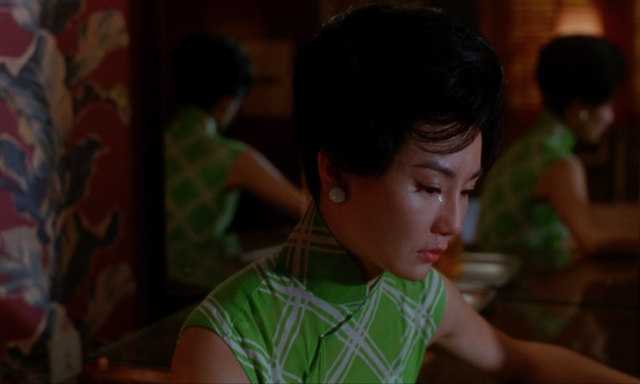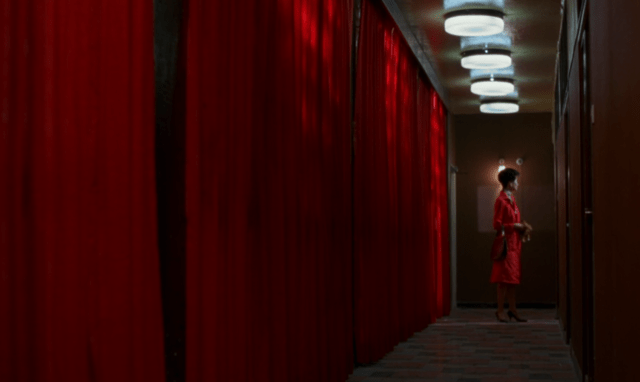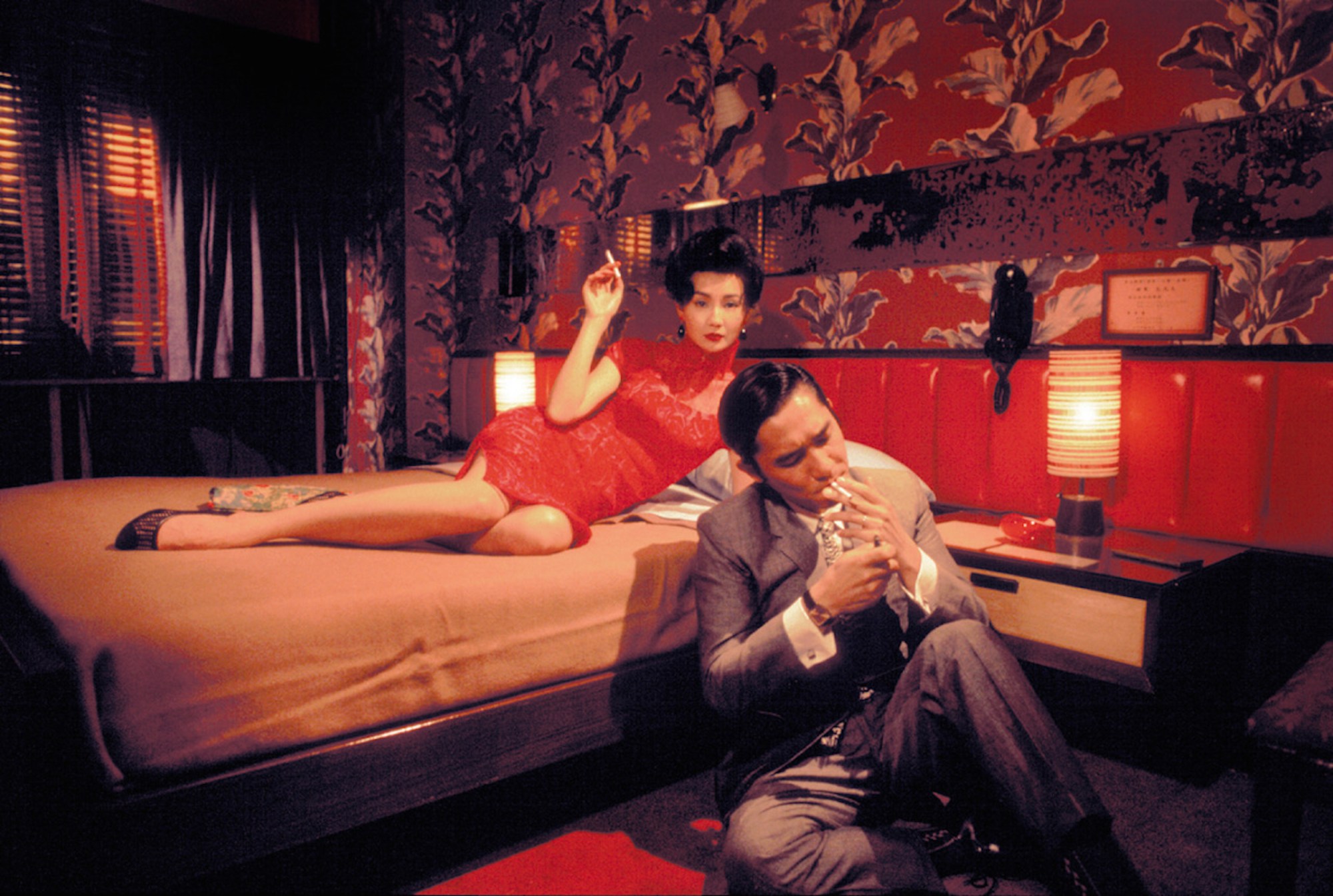Few contemporary films have had an impact like Wong Kar-wai’s In the Mood for Love. Since its premiere 20 summers ago, the film has continued to leave its mark across culture: critics place it near the top of every possible “Best 21st Century Films” list, it has bars and fashion brands named after it, and it’s boldly influenced many of the biggest filmmakers to come onto the scene since the year 2000.
In the Mood for Love’s English-language title couldn’t be more perfect, as it’s drenched in both of those nouns — primary colors and careful phrases, cigarette smoke and lovelorn songs. Over 98 minutes, Wong and his collaborators, cinematographers Christopher Doyle and Mark Lee Ping Bin, guide us into the warmly-lit rooms and dark corridors of Mr. Chow and Mrs. Chan’s Hong Kong.
In a pre-coronavirus world, the film had been set to have a major 20th anniversary celebration at this year’s Cannes Film Festival, where In the Mood for Love had its debut. To this day, its leads Tony Leung and Maggie Cheung are also the only Hong Kong actors to have won the festival’s prestigious Best Actor and Best Actress prizes. A 4K restoration of the film had been made under Wong’s supervision to premiere there, with an international re-release initially scheduled.
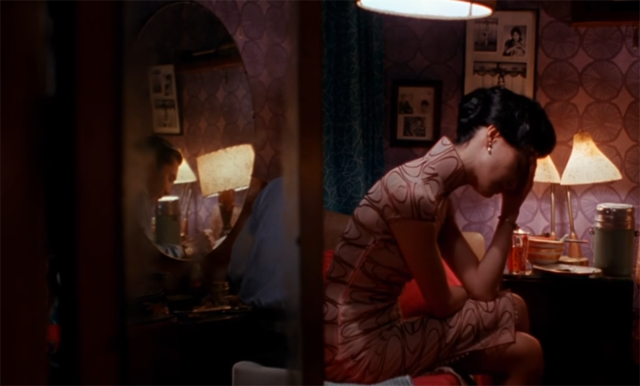
In the Mood for Love is just one of the many poetic films for which Christopher Doyle, an Australian-born Hong Kong cinematographer, is largely responsible for. Doyle is behind the lens of other infamous Wong Kar-wai projects like Happy Together and Fallen Angels, and has worked closely with Gus Van Sant. According to Doyle, In the Mood for Love had begun as a “search for the spaces that are most ‘true’ to Wong Kar-wai’s version of the 60s,” a search that perhaps unexpectedly centered on striving to craft how a “space feels and smells.” “True, you can’t film smell,” he says, “but smell is said to be the strongest trigger for memory.”
And In the Mood for Love does feel like a memory — or perhaps like a memory of a dream. It’s the story of a journalist, Chow Mo-wan (Tony Leung), and a secretary, Su Li-zhen, or Mrs. Chan, (Maggie Cheung), who realize their respective spouses are having an affair, and are then swept up into a restrained fantasy all of their own. Chow and Su live next door to each other, and are brought even closer by their mirrored betrayals. Throughout the film, they try to imagine how their spouses’ affair had started — what presents had been bought or what meals had been eaten.
“I was only curious how it started… Now I know,” Chow tells Su, near the film’s conclusion. “Feelings can creep up, just like that.”
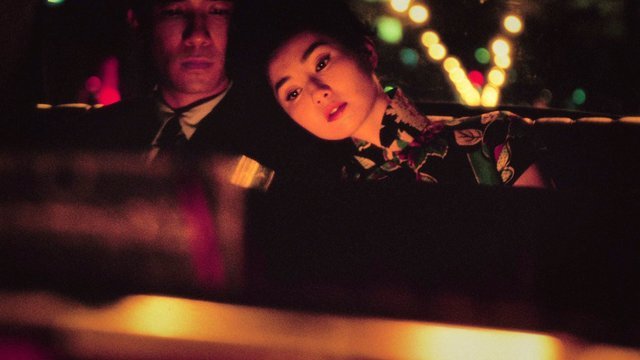
When asked about initial inspirations for the story’s visuals, Doyle responds, “I don’t feel the English word ‘inspiration’ applies to the way we (and many other Asian filmmakers) work. It’s more like a mandala: an enigma that slowly reveals itself layer by more intricate layer. The way we work is not black and white, heaven and hell, as Monotheistic religions claim… it’s more organic than structural, more intuitive than convinced in the Western way.” It’s about building a whole sequence, he says, out of an unplanned start.
“As always on a WKW film, we would work on a scene and then find it wasn’t going the right way, so either rework it, or change the roles around, or put it aside to do in a different location on another day.” The film had been not much more than an outline originally — Wong would bring pages of hand-written dialogue to set on the morning of shoots. There wasn’t a discernible formula: “Unless you remake Marvel comics and Fast and Furious kind of franchises all your life, you will never really know, or perhaps even care about what ‘works,’” Doyle says. “If we did, we would all either be intuitive geniuses or rich sell-outs.”
In the Mood for Love features limited locations (including some scenes that were actually shot in Macau and Bangkok, to achieve the ideal period feeling), and like today, in our separate-but-collective quarantines, the peoples’ lives change, but not the places which contain them. Su’s array of famously striking dresses switch scene to scene, even while the same shots of ticking clocks recur, and certain songs play over and over — most notably a haunting piece by Japanese composer Shigeru Umebayashi.
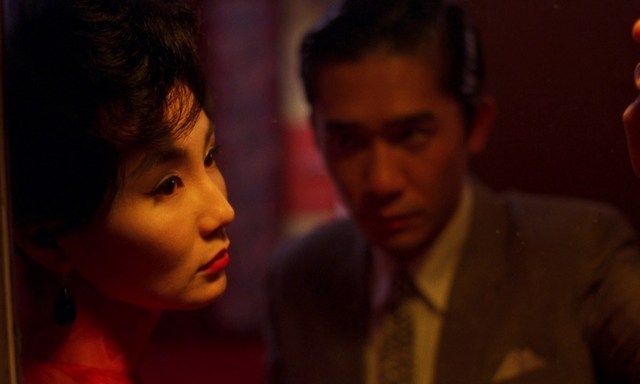
“The film is of, and celebrates, our [Hong Kong] world. In our world, there is no such thing as the Western concept of ‘privacy,’ except, as I think the film conceded, in the privacy of your own head,” Doyle says. “All you are and how you live is relevant to all around you: to society, to those you live with. So, of course, keeping a secret, or even showing an emotion, is a very devious endeavor.”
Fantasy – what isn’t happening – drives In the Mood for Love, transforming longing into a thrilling act.
Many of the most successful filmmakers of this century cite the film as personally monumental. Sofia Coppola’s Lost in Translation, released three years post-In the Mood for Love, bears some similarities, such as how her film’s iconic opening shot matches one from the former (she went on to thank Wong Kar-wai directly in her Oscar acceptance speech). Québécois filmmaker Xavier Dolan also referenced the film early in his career, with his characters walking in slow motion to a brooding soundtrack in his second film Heartbeats. “Maybe it was too obvious” of an homage, he recalled. “Maybe I should have been more discreet or subtle.”
“In the Mood for Love — I can’t even touch that film. I got to do this for another 40 years before I even come close,” is what Barry Jenkins told the Criterion Channel. Yet Jenkins’ Moonlight does hold certain parallels, especially in regards to its aesthetics and structure.
In asking Doyle what he thought of all the artists — not to mention, all the swarms of current film school students across the world — who’ve tried to reference In the Mood for Love, he says, “There is a town in Southern China where everyday thousands of perfect copies of the Mona Lisa — and Van Gogh, and Francis Bacon, and anyone else who sells well — are made by kids just out of art school, and sold in bulk to Walmart and Ikea and so on. I hear they are much appreciated and sell very well.”
What Doyle and the artists behind In the Mood for Love created was a crushingly original film, one unique in its dreamy portrayal of patience and possibility. Hopefully, sooner than later, we can meet in movie theatres and watch the new restoration of the film, but until then, it can be found on various streaming services. And Wong Kar-wai, additionally, is said to have started filming a “spiritual sequel” to In the Mood for Love at a studio in mainland China — a film which is titled, at least for now, Blossoms.
